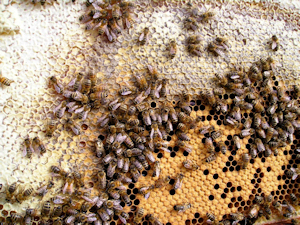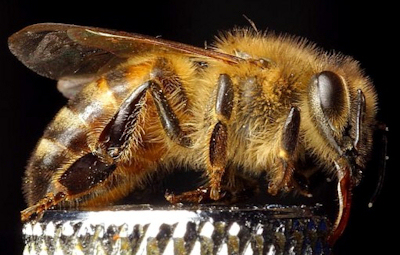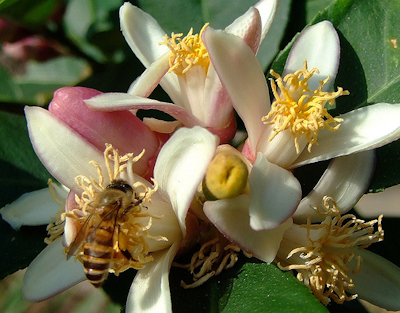How do Honey Bees Make Honey?

It’s the worker bees which collect the nectar that is used to make the honey. Honey Bees have a special stomach known as the ‘honey stomach’ which the nectar passes through and is then, with the addition of sugary matter, is regurgitated. This process can occur a number of times before it is finally added to the honeycomb cells as a food source for the colony.
This process is done on a mass scale until the desired amount and quality is acquired. But the honey has a high water and yeast content and so could ferment if not regulated. This unstable mix is amazingly cooled by the continuous fanning of the bees as they flap their wings which reduces the water content and therefore prevents the fermentation.
Honey is one of the Bees food source along with the nectar which they harvest from particular forms of flower and plant. The honey sustains the honey bee swarm through the colder months of the year and enables the swarm to survive to then continue the honey cycle the following year.
Although all Honey Bees produce good quantities of honey only two species are most commonly kept for harvesting honey. Here is some information about these two extraordinary insects:
Apis Mellifera – The Western Honey Bee or European Honey Bee

Native to Europe, Asia and Africa this wide spread species was also introduced to the North America over four hundred years ago. It has now spread throughout America. A wide range of subtly evolved subspecies have developed as different environments dictated different requirements for survival.
The most common subspecies kept by beekeepers is Apis Mellifera or the Italian honey bee which is a light golden colour with abdomens striped with yellow and dark brown. Its scientific name means ‘honey bearing’ or ‘honey producing’ and is probably the result of their specially adapted Corbiculae, pollen carrying baskets on the back of their legs. Their compound eyes appear ringed with hair, their heads being quite hairy.
The Apis Mellifera has a complex nest with multiple combs built inside a convenient cavity, like a hollow in a tree. Having a series of combs has made them great harvesters and therefore ideal for semi domestication and farming.
Apis Cerana – The Asiatic Honey Bee or the Eastern Honey Bee

Sharing the same subgenus of the Apis Mellifera this insect has many things in common with its Western counterpart. It is easily domesticated and produces complex honey yielding nests, although not as high as the Apis Mellifera. But this species has developed a series of specialist defensive abilities.
Apis Cerana has evolved to survive in harsh climate conditions and can handle temperature fluctuations and long periods of rain which would kill most other bees. They can even survive temperatures of -0.1 which is lethal to the Apis Mellifera.
They have also developed what is known as the ‘Thermal defence’. This is due to a predator, the Japanese Giant Hornet, which can invade the nest. The defending Honey Bees will swamp the Hornet and vibrate their flight muscles until they cook the hornet to death. This deadly temperature is just below the Bees threshold of 48 °C.

